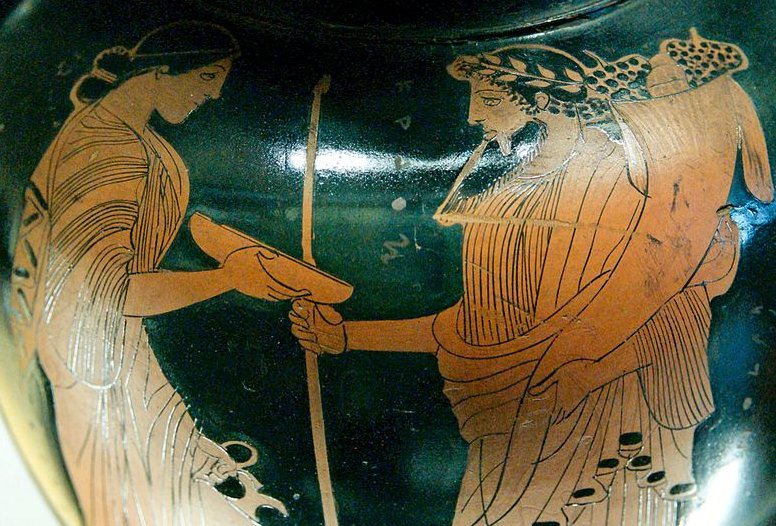Cornucopia – ‘Horn Of Plenty’ – Ancient Symbol And Its Almost Forgotten Meaning
A. Sutherland - AncientPages.com - A cornucopia (from Latin 'cornu copiae') - horn of plenty ) is often depicted in paintings and on friezes. It is a hollow horn-shaped container filled with abundant fruit, coins, flowers, grain, nuts, or any other desirable things.
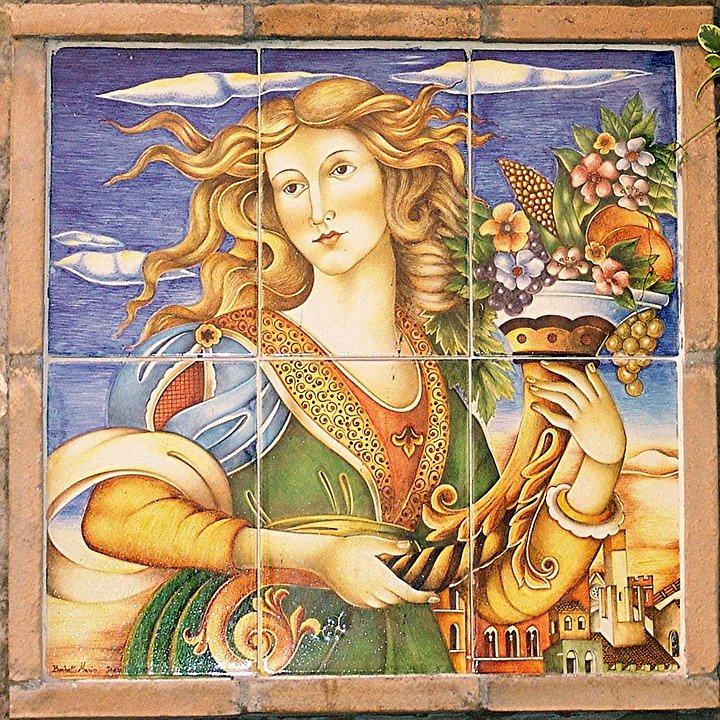 A woman holding a cornucopia. Public Domain
A woman holding a cornucopia. Public Domain
It is an ancient symbol of boundless abundance.
Many of us have a cornucopia at home; it can be made of plastic, wicker, metal, wood, or other materials. It can be symbolically filled with something valuable or simply beautiful.
Cornucopia – a horn of plenty – symbolizes wealth, abundance, fertility, and nourishment. It is highly respected by many ancient cultures, including the Celts, whose concept of abundance was central to their religion.
Initially, it represents a mythical symbol originating from the Mediterranean region of Europe. In North America, the cornucopia is associated with the country's great tradition of Thanksgiving, dating back to the Protestant Reformation in 16th-century Europe but the symbol of cornucopia dates back to very ancient times.
Popular Versions Of Cornucopia's Origin
Several mythological explanations suggest the origin of the cornucopia, some of which date back to the 5th century BC. Two of them are believed to be the most popular.
Left: Fortuna, the goddess of good luck, was given the power to bring prosperity to a human being and her attribute is a cornucopia - horn of plenty. Image credit: Vatican, Rome, Italy. Statue of Fortune. Brooklyn Museum; Right: Angel with the horn of plenty. Image credit: Wolfgang Sauber/Wikipedia
According to a version in Greek mythology, the cornucopia belonged to the goat Amalthea ("Nourishing Goddess"), who protected and raised the infant Zeus, who, even as a little boy, had enough strength to break off one of Amalthea's horns while playing. The horn then had the divine power to fill up with everything the owner wanted.
This mythological horn is known as the horn of plenty (cornucopia), and its tradition continues today.
In another myth, the cornucopia was created during one of Heracles' (Roman Hercules) missions to fight with the river god Achelous. During their encounter, Heracles broke off one of his horns.
Gods And Goddesses Were Often Depicted With Cornucopia
The cornucopia became the attribute of several Greek and Roman deities, particularly those associated with prosperity, harvest, or spiritual abundance.
Hades (right-hand side) with a cornucopia and Persephone (left-hand side). Detail from an Attic red-figure amphora, ca. 470 BC. Image credit: Jastrow - CC BY 3.0
Erecura (Aerecura), a goddess often considered Celtic in origin, was often depicted with attributes of fertility as the cornucopia and apple baskets. Also, Epona is associated with cornucopia, Dionysus, and Hades, the god of the underworld and ruler of the dead, who, as Plouton (or Pluto), is a bringer of agricultural, mineral, and spiritual wealth.
In ancient Roman religion, Abundantia was a divine personification of prosperity and abundance. She was often depicted with a cornucopia like the Roman goddess of peace, Pax, who cared for peace (Pax Romana) and wealth and had attributes like an olive branch and a horn of plenty.
Ancient sources confirm that the cornucopia or some versions were found on seals and buildings and imprinted in Jewish coins during the Maccabean times.
A Symbol Of Cornucopia In Ancient Egypt
The cornucopia was also an important symbol for ancient Egyptians.
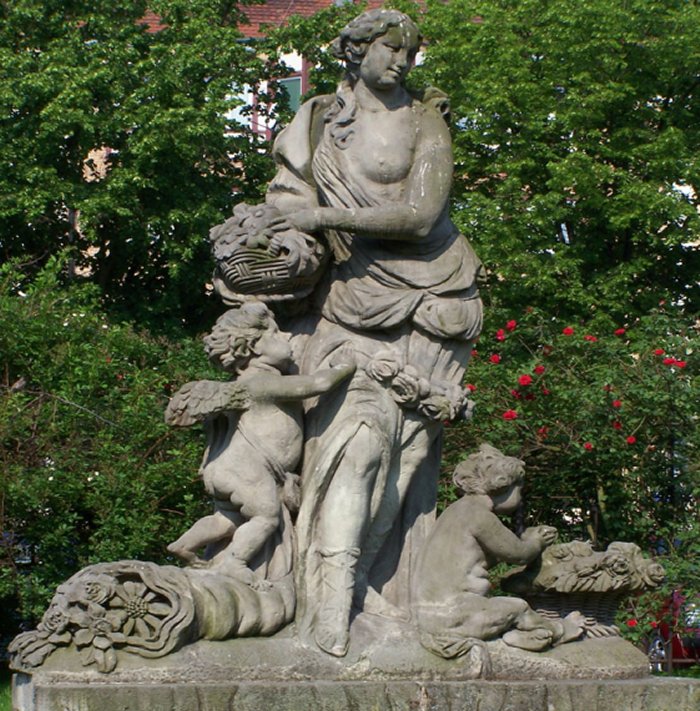 Cornucopia in the Statue of Flora in Szczecin, Poland. Image credit: Remigiusz Józefowicz - CC BY-SA 2.5 pl
Cornucopia in the Statue of Flora in Szczecin, Poland. Image credit: Remigiusz Józefowicz - CC BY-SA 2.5 pl
"Horus the Child (the Greek Harpocrates, the god of silence and confidentiality) was one of the best-loved. In the early centuries of the Christian era, he was depicted as a child, sometimes seated in a lotus blossom, a ship, or enthroned as a follower of the sun god. Frequently he carries a cornucopia or a jar…' Lewis Spence writes in his book 'Ancient Egyptian Myths and Legends.'
The legendary Cleopatra VII, the last active ruler of the Ptolemaic Kingdom of Egypt, struck several series of silver coins at the mint in Askalon. On one side of these coins, there is her portrait, and on the reverse (back), Ptolemaic coins have exceptionally only a few motifs; one of them is particularly popular (more than 95 percent) and shows a symbol of a cornucopia (on gold coins).
The cornucopia is still a popular decorative motif, although the symbol's very ancient sacred meaning has long been forgotten.
Written by – A. Sutherland - AncientPages.com Senior Staff Writer
Updated on April 3, 2023
Copyright © AncientPages.com All rights reserved. This material may not be published, broadcast, rewritten or redistributed in whole or part without the express written permission of AncientPages.com
Expand for referencesReferences:
Harrison J. E. Themis: A Study of the Social Origins of Greek Religion
Spence L. Ancient Egyptian Myths and Legends
More From Ancient Pages
-
 New Light On Prehistoric Chalk Plaques From Stonehenge Using Innovative Technology
Archaeology | Nov 3, 2021
New Light On Prehistoric Chalk Plaques From Stonehenge Using Innovative Technology
Archaeology | Nov 3, 2021 -
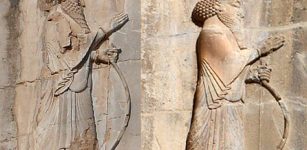 Naqsh-e Rostam: Spectacular Tomb Complex With Rock Reliefs From Elamite To Sasanian Times
Civilizations | Nov 15, 2018
Naqsh-e Rostam: Spectacular Tomb Complex With Rock Reliefs From Elamite To Sasanian Times
Civilizations | Nov 15, 2018 -
 Magnificent St. Paul’s Catacombs – Largest Underground Roman Cemetery In Malta
Featured Stories | Aug 28, 2019
Magnificent St. Paul’s Catacombs – Largest Underground Roman Cemetery In Malta
Featured Stories | Aug 28, 2019 -
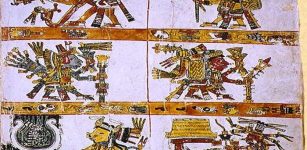 Codex Borgia: Pre-Columbian Mexican Manuscript Of Great Importance
Ancient Traditions And Customs | Sep 7, 2016
Codex Borgia: Pre-Columbian Mexican Manuscript Of Great Importance
Ancient Traditions And Customs | Sep 7, 2016 -
 3,500 Underground Man-Made Maresha/Beit Guvrin Caves And Tunnels In The Holy Land
Featured Stories | Jun 1, 2014
3,500 Underground Man-Made Maresha/Beit Guvrin Caves And Tunnels In The Holy Land
Featured Stories | Jun 1, 2014 -
 Binary Code Was Used In Ancient India And Polynesia Long Before Leibnitz Invented It
Ancient Technology | Sep 28, 2017
Binary Code Was Used In Ancient India And Polynesia Long Before Leibnitz Invented It
Ancient Technology | Sep 28, 2017 -
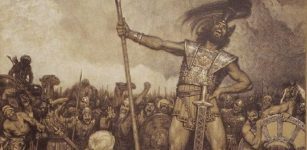 Skull Of Biblical Giant Goliath Is Buried On The Hill Golgotha In Jerusalem – New Claim
Archaeology | Nov 7, 2019
Skull Of Biblical Giant Goliath Is Buried On The Hill Golgotha In Jerusalem – New Claim
Archaeology | Nov 7, 2019 -
 Humans In Africa Fled To The Mountains During The Last Ice Age
Archaeology | Aug 9, 2019
Humans In Africa Fled To The Mountains During The Last Ice Age
Archaeology | Aug 9, 2019 -
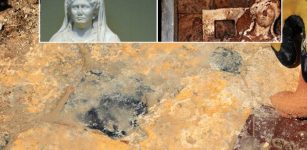 Sun Disk Unearthed On 3,500-Year-Old Rock Altar In Thracian Settlement, Edirne, NW Turkey
Archaeology | Sep 26, 2020
Sun Disk Unearthed On 3,500-Year-Old Rock Altar In Thracian Settlement, Edirne, NW Turkey
Archaeology | Sep 26, 2020 -
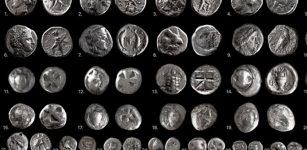 Incredible Treasure Of Extremely Rare Greek Coins And Aqueduct Found In Ancient Tenea, Greece
Archaeology | Jan 10, 2024
Incredible Treasure Of Extremely Rare Greek Coins And Aqueduct Found In Ancient Tenea, Greece
Archaeology | Jan 10, 2024 -
 On This Day In History: The Lumière Brothers Presented Their First Film In Paris – On Dec 28, 1895
News | Dec 28, 2016
On This Day In History: The Lumière Brothers Presented Their First Film In Paris – On Dec 28, 1895
News | Dec 28, 2016 -
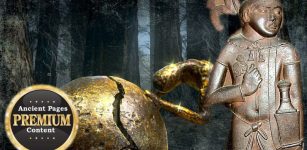 Forbidden High-Tech Knowledge Of A Controversial Ancient Lost Super Race
Civilizations | Jun 22, 2018
Forbidden High-Tech Knowledge Of A Controversial Ancient Lost Super Race
Civilizations | Jun 22, 2018 -
 ‘Masters Of The Desert’ – Hohokam People, Massive Caliche Structures And Sophisticated Extensive Irrigation Canals
Civilizations | May 31, 2016
‘Masters Of The Desert’ – Hohokam People, Massive Caliche Structures And Sophisticated Extensive Irrigation Canals
Civilizations | May 31, 2016 -
 Secrets Behind 2,000-Year-Old Roman Water Management Revealed
Ancient Technology | Aug 4, 2023
Secrets Behind 2,000-Year-Old Roman Water Management Revealed
Ancient Technology | Aug 4, 2023 -
 Strange Ancient Artifacts And Foreigners Who Were Not Meant To Be In North America
Artifacts | Mar 16, 2020
Strange Ancient Artifacts And Foreigners Who Were Not Meant To Be In North America
Artifacts | Mar 16, 2020 -
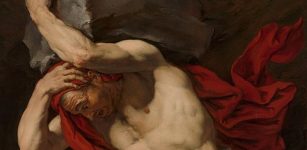 Why Did God Zeus Give King Sisyphus An Eternal Punishment?
Featured Stories | Sep 2, 2019
Why Did God Zeus Give King Sisyphus An Eternal Punishment?
Featured Stories | Sep 2, 2019 -
 Are The Ten Commandments Based On The Forty-Two Principles Of Maat That Appeared 2,000 Years Earlier?
Biblical Mysteries | Jul 15, 2017
Are The Ten Commandments Based On The Forty-Two Principles Of Maat That Appeared 2,000 Years Earlier?
Biblical Mysteries | Jul 15, 2017 -
 Illapa: Powerful Master Of Clouds, Rain And Hail – Worshipped By Inca People
Featured Stories | Jul 7, 2016
Illapa: Powerful Master Of Clouds, Rain And Hail – Worshipped By Inca People
Featured Stories | Jul 7, 2016 -
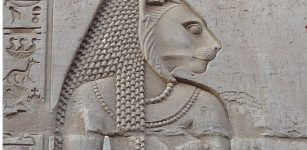 Fearsome Sekhmet: Lion-Headed Egyptian Goddess And Sister Of Ptah
Egyptian Mythology | May 13, 2020
Fearsome Sekhmet: Lion-Headed Egyptian Goddess And Sister Of Ptah
Egyptian Mythology | May 13, 2020 -
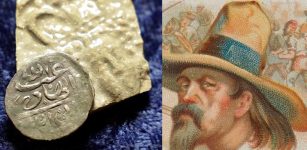 Can This Ancient Coin Solve The Mysterious Disappearance Of Pirate Henry Every?
Archaeology | Apr 1, 2021
Can This Ancient Coin Solve The Mysterious Disappearance Of Pirate Henry Every?
Archaeology | Apr 1, 2021


